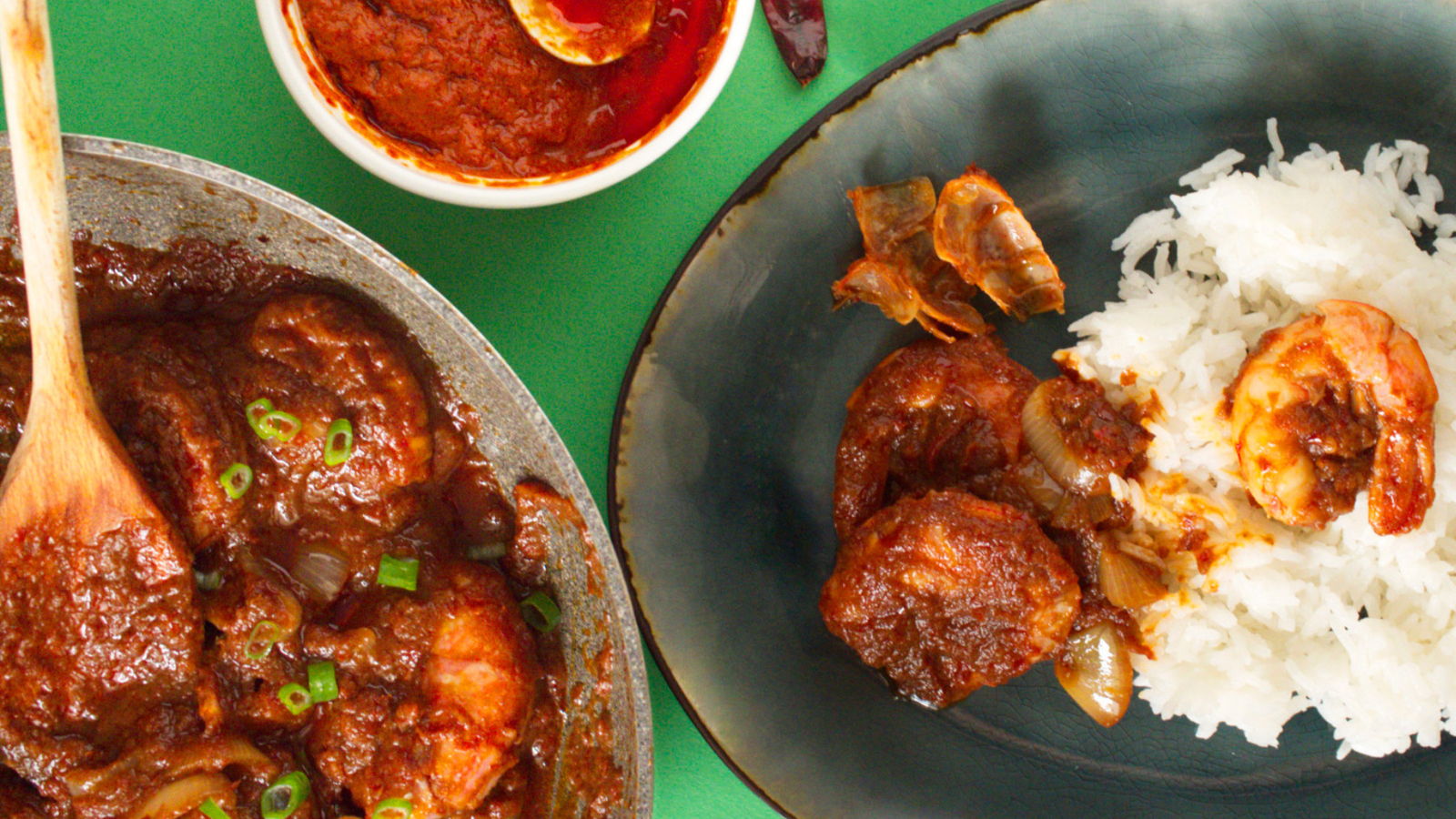Prawn sambal or also known as Sambal Belacan Udang is a familiar side dish for Nasi Lemak (coconut rice). Udang which means ‘prawn‘ is the seafood that goes very well in this spicy and delicious sambal. Belacan or shrimp paste is the key to giving the subtle savoury flavour, therefore it is very important in this dish. This spicy seafood dish is extremely popular throughout Malaysia, Singapore and Indonesia. There are many variations of this dish among the local Indian, Chinese and Malay cuisine.
While it may look complicated, this dish is easy to prepare using only a few ingredients. It will make you look like a master chef and wow your guests!
Why this recipe works?
There are some secret tricks to making the best sambal. Having the perfect ratio of aromatics is very important. For example, excessive garlic in the recipe may cause the dish to taste bitter. I will share the sequence to sautéing the ingredients as it is also just as important or the ingredients will not taste their best. In Malay, we call this important step ‘tumis’ which literally translates to ‘sauté’.
This recipe also guarantees a thick and saucy sambal. Almost like a jam, the thick sauce coats the prawns really well giving each mouthful a bit of spice, sourness and sweetness.
Why the sambal tastes raw?
It is important to cook the cili boh (chilli paste) until the oil separates. This is an indicator to know that the chilli paste is fully cooked. Shallots and other aromatics enhance the flavours of the dish. You will taste the umami flavours from the caramelization of aromatics.
Avoid bitterness
There might be complaints of the sambal tasting slightly bitter. Usually, you will only notice this after completing the dish. To avoid the bitter flavour, do the following:
- Do not over cook - This includes cooking the dish for too long or using too high heat. Doing so may cause the ingredients to burn resulting in an unpleasant bitterness.
- Soak and boil the dried chillies - This step is only needed if you are making your own cili boh (chilli paste).
Replace cili boh with sambal oelek?
Short answer - not recommended. Depending on the brand of Sambal Oelek, it may contain more or less ingredients. Chillies, onion, garlic and vinegar are the most common ingredients. However, these ingredients perish easily, therefore preservatives are added. With the long shelf life and added ingredients, the sambal is going to taste very different after cooking.
How to serve?
This spicy sambal goes really well with rice, Masak Lodeh (vegetable in coconut milk), Lempeng, Roti Jala (lacy pancakes), steamed glutinous rice and even fried noodles.

